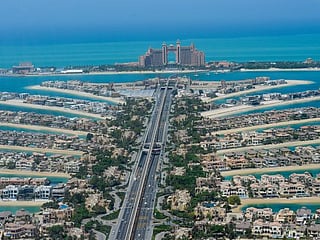GCC to lead Middle East's post-COVID economic rebound: IMF
Recovery of oil importers is expected to be sluggish in the near term

Also In This Package
Dubai: Oil exporting countries in the Middle East, especially the GCC will lead the post-COVID economic rebound in the region according to the International Monetary Fund (IMF).
The latest Regional Economic Outlook (REO) from the IMF said the available real GDP data in the region point to a strong rebound from the third quarter of 2020 as countries relaxed lockdown measures.
Oil exporters
Higher oil prices and early vaccine rollouts support the outlook for many GCC economies. The recent increase in oil prices will boost confidence, supporting non-oil GDP, which is projected to expand by 3.3 per cent in 2021.
The IMF revised growth rates of GCC economies significantly upwards from its last update in October 2020. The latest REO has forecast the UAE and Saudi Arabia to grow 3.1 per cent and 2.9 per cent in 2021 against estimated contractions of 5.9 per cent and 4.1 per cent. In its October 2020 report, it had forecast 1.3 per cent and 2.6 per cent growth for the UAE and Saudi Arabia.
While Oman is projected to move out of recession this year with a 1.8 per cent GDP growth, Bahrain is projected to grow 3.3 per cent. Kuwait is forecast to grow at the lowest rate in the GCC with 0.7 per cent; Qatar has a slightly better growth outlook at 2.4 per cent for 2021.
Oil activity will remain subdued in the short term, reflecting the OPEC+ production curbs and continued US sanctions on Iran.
“Within the region, countries with above-average fiscal support in 2020 are expected to return to pre-pandemic GDP levels in 2022. In contrast, those with below-average support will not see a return to 2019 levels until 2023,” said Jihad Azour, the IMF’s Director of the Middle East and Central Asia Department.
Purchasing managers’ indices (PMI) of most GCC countries returned to expansionary territory by mid-2020 and continued to signal an upward trend in some oil exporters such as Qatar, Saudi Arabia, UAE.
The fiscal balances for oil exporters are expected to improve significantly, reflecting higher oil revenue. The increase in oil prices is expected to markedly improve oil exporters’ external position. Their current account balance is projected to increase by $128 billion.
Rising debts to curtail long term growth outlook
The International Monetary Fund said on Sunday countries in the Middle East and Central Asia need to curb their financing requirements, as a surge in government debt, exacerbated by the pandemic, threatens recovery prospects. Overall the outlook remains highly uncertain and recovery paths will diverge depending on the speed of vaccinations, reliance on heavily impacted sectors, such as tourism, and countries’ fiscal policy. The crisis led many countries in the region to raise debt, partly taking advantage of abundant liquidity in the global markets, to afford extra spending needed to mitigate the impact of the pandemic. The IMF warned that financing needs are projected to increase over the coming two years, with emerging markets in the region likely to need around $1.1 trillion during 2021-2022 from $784 billion in 2018-2019.
Oil importers
Oil importers in general showed contraction though less so than during the pandemic’s first wave, as lockdowns were re-imposed. Workers’ remittances also held up better than expected. Flows rebounded in the third quarter of 2020 after a sizable drop in the second quarter, reflecting a combination of factors, including a broad improvement in third quarter growth in remittance-sending countries, an accelerated switch to formal transfer channels because of border closures, and incentives for electronic transfers.
The recovery in oil importers is expected to be sluggish in the near term, with growth projected at 2.3 per cent in 2021—a downgrade of 0.4 percentage point relative to October.
Growth projections for Jordan, Morocco, and Tunisia, which are highly dependent on tourism, have been marked down. Egypt and Pakistan’s economies, which were relatively resilient in 2020, are forecast to experience a sluggish recovery in 2021.
Lebanon is the only country in the region where activity is expected to contract further, reflecting the deep economic and financial crisis that has been worsened by the pandemic’s second wave.
Inflation is expected to remain at double-digits in fragile and conflict-affected states such as Lebanon, Libya, Sudan, and Yemen driven by domestic macroeconomic instability.
With the recovery underway, fiscal balances are expected to improve across the region, because of higher revenues and the expiration of pandemic-related measures, and the resumption of fiscal consolidation in some countries such as Egypt, Iraq, Jordan, Oman, and Pakistan with elevated debt burdens.
High financing needs could constrain the policy space required to support the recovery, as many countries would need to address fiscal and debt challenges. Average public gross financing needs in 2021–22 in the regions’ emerging markets are expected to remain elevated, reaching 37 per cent of GDP in Bahrain and Egypt per year.
Sign up for the Daily Briefing
Get the latest news and updates straight to your inbox









